Dehydrating your own food is a great way to preserve delicious, healthy snacks and meals for long term storage. However, just because you can dry a food doesn’t mean you necessarily should dehydrate it. Not all foods can be successfully preserved by dehydration. Understanding what foods can and cannot be dehydrated is important for anyone interested dehydrating food at home.
Check out our free PDF of what foods can and cannot be dehydrated: The Ultimate Guide to Dehydrating Over 500 Foods!

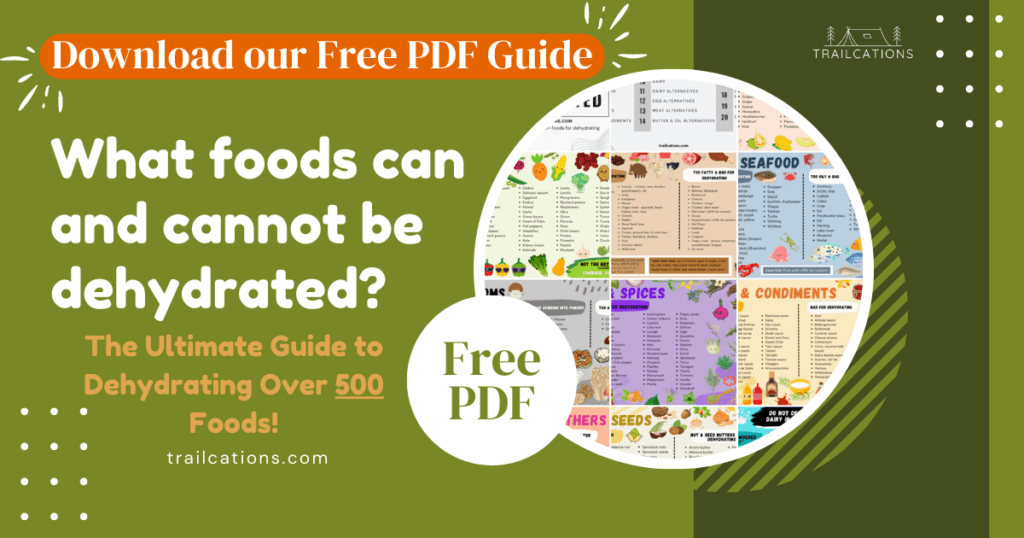
When I first bought my food dehydrator, one of my biggest concerns was, “What foods can be dehydrated?” Then shortly after, I was even more overwhelmed wondering, “What foods cannot be dehydrated?”
I had heard scary stories about botulism, a fatal bacteria that can grow when lazy food preservation practices are followed. I didn’t want to get food poisoning from dehydrating the wrong food! Luckily I am still here today to help you figure out what foods you can and cannot dehydrate.
“What foods can and cannot be dehydrated?” is an important question for anyone interested in buying a home dehydrator or if you’re looking for a list of food drying ideas to get started dehydrating. After 10 years experience spent dehydrating my own food for outdoor adventure trips, reading dozens of dehydrating cookbooks and doing a ton of food science and kitchen safety research, I’ve compiled a huge list of foods that are great for dehydrating and quite a few foods that should never be dehydrated.
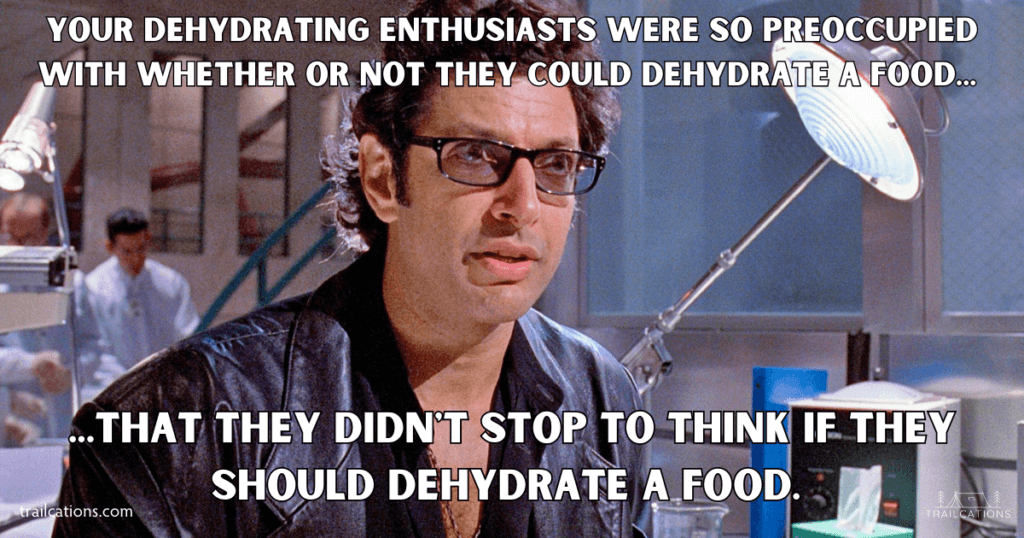
Table of Contents
- What Foods Can and Cannot be Dehydrated?
- Dehydrate Like a Pro (Even if You’re a Beginner!)
- 11 Best Foods to Dehydrate for Long Term Storage and Snacks
- 10 Foods to Never Dehydrate
- Foods That Can Be Dehydrated
- What Fruit Can Be Dried in a Dehydrator?
- What Vegetables Can Be Dehydrated?
- Can You Dehydrate All Meat and Fish?
- What Types of Mushrooms Can Be Dehydrated?
- What Herbs and Spices Can Be Dried in a Dehydrator?
- Can You Dehydrate Sauces and Condiments?
- Best Ingredients for Fruit and Veggie Leathers
- The Best Meat, Dairy and Egg Alternatives for Dehydrating
- What Type of Grains and Noodles Can You Dehydrate?
- The Best Gluten Free (GF) Grains, GF Noodles, GF Grain Substitutes, Processed GF Grains For Dehydrating
- The Best Raw Foods For Dehydrating and Long Term Storage
- Dehydrating Sweeteners
- Dehydrated Baked Goods: Cakes, Breads, Pastries and Bars
- Can You Dehydrate Dog and Cat Food?
- Foods That Cannot Be Dehydrated
- High-Fat Meats and Fish Cannot Be Safely Dehydrated
- Never Dehydrate Dairy Products
- The Risk of Food Poisoning While Dehydrating Eggs
- Butter and Oil Cannot Be Dehydrated Safely
- You Cannot Dehydrate Avocado Safely 🙁
- Dehydrated Nuts and Seeds Spoil in Long Term Storage at Room Temperature
- Skip Dehydrating the Oily Marinades
- Flavorless / Weird Texture Foods You May Want To Avoid Dehydrating
- Pass On Dehydrating Overripe / Underripe Foods
- What Types of Foods Should You Dehydrate? Only the Foods You Like!
- Storing Dehydrated Food for Long Term Storage
- Conditioning Your Food: A Final Quality Check
- How to Extend the Shelf Life of Your Dehydrated Food
- Download Our Free Printable PDF: What Foods Can and Cannot Be Dehydrated? The Ultimate Guide to Dehydrating 500+ Foods!
What Foods Can and Cannot be Dehydrated?
There are so many foods that can be dehydrated for long-term storage including fruits, vegetables, meat, fish, plant-based meat alternatives, mushrooms, herbs, sauces, raw foods, fruit leathers, grains, noodles, gluten-free foods, honey, jams and even dog food.
Since dehydrating works by removing the moisture or water from a food, ingredients that are oil-based or high in fat do not dehydrate well. Unfortunately, foods like avocados, dairy products, nut butters and fatty meats cannot be safely dehydrated due to their high fat content which goes rancid over a short amount of time.
Dehydrate Like a Pro (Even if You’re a Beginner!)
As a beginner dehydrating enthusiast, I struggled to understand which foods were good or bad for home drying. I was so scared that my brand new dehydrator sat on my kitchen table for a whole week before I was confident enough to try drying some apples. They ended up being so delicious that the whole batch disappeared within 24 hours, gobbled up by roommates and friends.
Now after lots of research and over a decade of experience of drying my own food, I’ve made a very extensive list of what foods can and cannot be dehydrated. I’ve also noted where even though a food can be dehydrated, it probably shouldn’t be usually due to strange textures or flavors when it’s rehydrated.
We’ll discuss the benefits of dehydrating food, why some foods are better candidates for dehydrating than others and provide tips on how to extend the shelf life of your dehydrated food. Whether you are an outdoor adventurer, homesteader, prepper or just interested in healthy eating, this article will provide you with the information you need to safely start dehydrating your own food.
11 Best Foods to Dehydrate for Long Term Storage and Snacks
- Fruits (home garden or store-bought)
- Vegetables (home garden or store-bought)
- Lean Meats (Jerky, Beef, Chicken, Fish, Seafood)
- Fruit and Veggie Leathers (Applesauce, Pureed fruits & veggies)
- Meat Alternatives (Plant-based meats)
- Mushrooms
- Sauces (Tomato, BBQ, & more)
- Herbs & Spices
- Grains & Noodles
- Sweeteners (Syrup, Jam & Honey)
- Pet Food (Cat & Dog treats)
10 Foods to Never Dehydrate
- Avocado
- Olives
- Dairy (Milk, Yogurt, Cheese, Butter)
- Eggs (Egg yolk, egg whites, whole eggs)
- Fatty Meats (Pork, Sausage, Goose, Duck, Ground Meat more than 10% fat)
- Nuts & Seeds* (Including nut & seed butters, flours and milks)
- Oily or Fatty Sauces & Condiments (Oily Marinades, Pestos, Dairy-based Sauces, Salad Dressings)
- Artificial Sweeteners
- Juices, Sodas and Waters
- Fatty Plant-Based Meats
*Unless stored in a refrigerator or freezer.
Foods That Can Be Dehydrated
Dehydrating food at home is an excellent way to preserve ingredients for long term storage, avoid added preservatives of store-bought food and save money on healthy snacks and meals. So many types of food can be dehydrated including fruits, vegetables, fish, lean meats, meat alternatives, herbs, grains, noodles, jams, syrups and raw foods.
However, foods high in fat or oil aren’t suitable for drying. Below are some examples of foods that can be dehydrated:
What Fruit Can Be Dried in a Dehydrator?
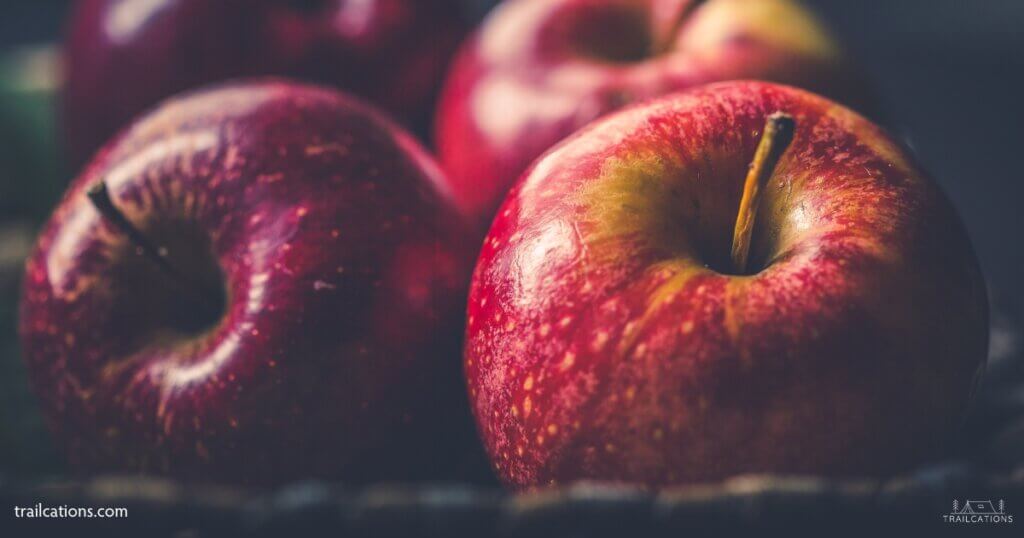
Fruits are some of the best foods to dehydrate as they have high sugar content and low acidity. These factors make them ideal for preservation and long term storage. My favorite uses for dehydrated fruits are to brighten up a trail mix, added to morning oatmeal and desserts, pureed into fruit rollups, infused in teas or served in a beautiful mason jar cocktail.
Fruits should be washed, peeled, cored, pitted and sliced thinly before placed onto even layers on the dehydrating trays. Light colored fruit tends to oxidize or turn brown when left to sit out, so pretreating apples, bananas and pears with a citrus solution will make the fruits look more appealing.
Some of the most popular fruits to dehydrate include:
- Acai
- Apples
- Apricot
- Banana
- Blackberries
- Blueberries
- Boysenberries
- Breadfruit
- Cantaloupe
- Cherries
- Cranberries
- Currants
- Dates
- Dragon fruit
- Figs
- Goji berry
- Golden berry
- Grapefruit
- Grapes
- Guava
- Jackfruit
- Kiwi
- Lemon
- Lime
- Mango
- Melon
- Nectarine
- Orange
- Papaya
- Passionfruit
- Peach
- Pear
- Pineapple
- Plums
- Raspberries
- Rhubarb
- Star fruit
- Strawberries
- Tangelo
- Watermelon
There are some fruits that you should not dehydrate due to their naturally high fat content. Even though these fats are healthy, they are not good for dehydrating and will spoil in long term storage.
The fruits you cannot dehydrate are (yes, these are technically considered fruits!):
- Avocado
- Coconut
- Olives
What Vegetables Can Be Dehydrated?
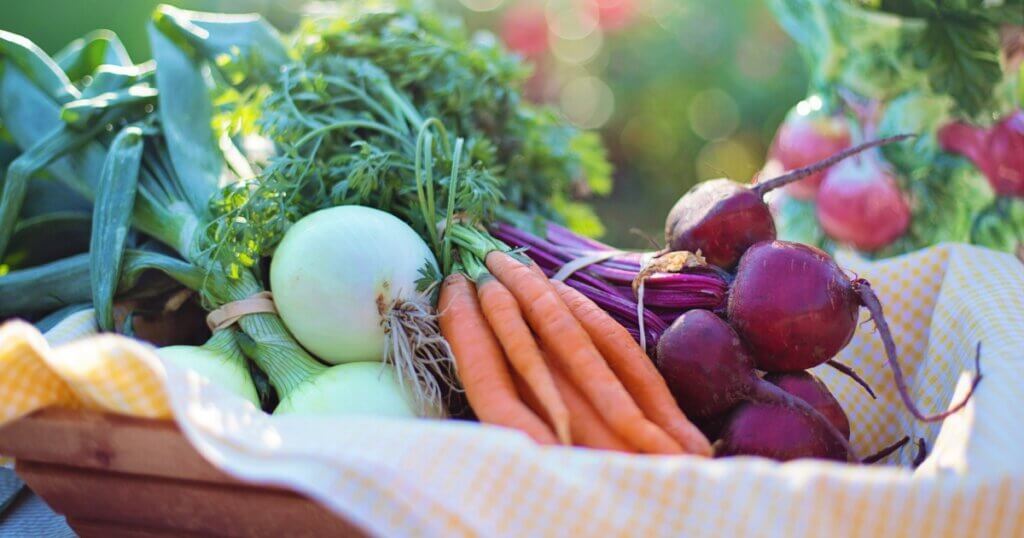
Vegetables are also excellent for dehydrating as they can be used in a variety of dishes. I love adding vitamin-rich veggies to soups and stews where they rehydrate and take on the flavors of delicious broth. Spiralized vegetable noodles are a great vegan and gluten free substitute for traditional pastas. Dehydrated leftover veggie scraps and peels can be ground into a healthy instant vegetable broth mix. My latest obsession is experimenting with sliced vegetables and spices to create endless combinations of crunchy veggie chip snacks like home dried kale chips.
Make sure to wash your vegetables thoroughly before peeling, deseeding, slicing, spiralizing or dicing. Tough root vegetables do well with a bit of blanching or steaming before drying to speed up the dehydrating times.
The best vegetables to dehydrate include:
- Artichokes
- Arugula
- Asparagus
- Bamboo shoots
- Beans
- Beets
- Bell peppers
- Bok choy
- Broccoli
- Broccolini
- Brussels sprouts
- Butternut squash
- Carrots
- Cauliflower
- Celery
- Chard
- Chickpeas
- Collard greens
- Corn
- Eggplant
- Endive
- Fennel
- Garlic
- Green beans
- Heart of palm
- Jalapeños
- Kale
- Kidney beans
- Kohlrabi
- Leeks
- Lentils
- Mustard greens
- Okra
- Onion
- Parsnip
- Peas
- Potato
- Pumpkin
- Rhubarb
- Rutabaga
- Spinach
- Squash
- Sweet potato
- Tomato
- Turnip
- Water chestnuts
- Yams
- Zucchini
Some vegetables contain too much water to hold up during the dehydrating process. They become limp or mushy and bland tasting when dehydrated so it’s better to eat them fresh.
Vegetables that aren’t the greatest for dehydrating include:
- Cabbage
- Cucumbers
- Lettuce
Can You Dehydrate All Meat and Fish?
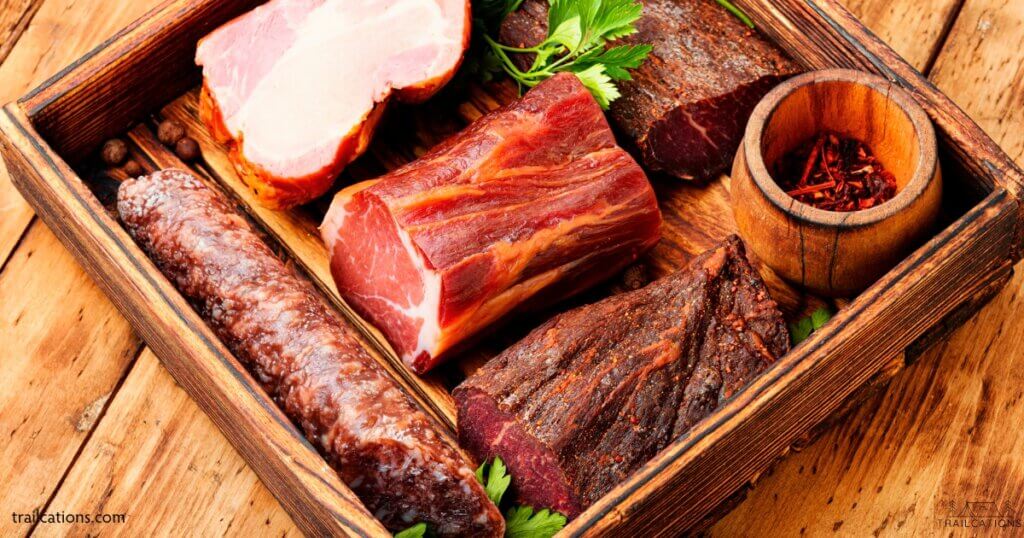
Meat, fish, seafood and poultry can also be dehydrated but it is important to only use lean cuts of meat with any visible fat trimmed. The National Institutes of Health recommend only drying fish and seafood with less than 5% fat. Likewise, avoid fatty species of poultry, fish, pork and wild game as the high fat content will quickly spoil in storage.
Cook Your Meat First, Then Dehydrate
The USDA (United States Department of Agriculture) currently recommends cooking all meat prior to dehydrating. Meat should be first cooked to 160°F (71°C) and poultry to 165°F (74°C). Studies have shown that bad bacteria that cause food poisoning can survive (and thrive) on raw meat in the dehydrator. As someone who survived 4 days of food poisoning and near hospitalization from eating dehydrated raw meat, I would highly recommend the USDA’s guidelines to cook the meat first.
Avoid Oily Meat and Jerky Marinades
When making beef jerky (or really any kind of jerky), avoid using oily marinades. Marinades containing oils will cause your food to become rancid in long term storage and the shelf life of your jerky will decrease dramatically. Oils are also the perfect anaerobic (air free) environment for botulism, a common yet potentially deadly bacteria, to grow. Avoid using oily marinades unless you’re going to refrigerate your jerky and consume it within a week.
Deep Freeze Wild Game To Kill Off Parasites
There are specific food safety protocols for wild game meat that should be followed before dehydrating. To kill off any parasites, the National Center for Home Food Preservation recommends that wild game should be cut into 6 in (15 cm) pieces and frozen below 0°F (-18°C) for 30 days. You must use a chest or deep freezer as many refrigerator-freezer appliances found in kitchens can’t reach low enough temperatures. Some wild game parasites are so dangerous that they have been declared as bioterrorism weapons.
Good types of Meats to dehydrate include:
- Beef, lean cuts
- Beef, ground 90% or 93% extra lean
- Bison, ground 90%
- Bison, lean cuts
- Chicken, canned
- Chicken, ground
- Chicken, white meat, skinless
- Cultured meat, lean
- Deli meat, less than 10% fat
- Elk
- Emu
- Goat
- Grouse
- Guinea fowl
- Insects
- Jerky
- Kangaroo
- Moose
- Organ meat – gizzards, heart, kidney, liver, tripe
- Ostrich
- Rabbit
- Roast beef, lean
- Squirrel
- Turkey, ground lean
- Turkey, boneless, skinless
- Veal
- Venison (deer)
- Wild boar
The best types of Fish and Seafood to dehydrate include:
- Alligator
- Barramundi
- Clams
- Cod
- Crappie
- Croaker
- Flounder
- Frog
- Grouper
- Haddock
- Halibut
- Imitation crab
- Lobster
- Mahi-mahi
- Monkfish
- Muskellunge
- Mussels
- Octopus
- Orange roughy
- Perch
- Pike
- Pollock
- Prawns
- Rockfish (Striper)
- Scallops
- Sea bass (Branzino)
- Sea trout
- Shrimp
- Smelt
- Snapper
- Sole
- Squid
- Sunfish, freshwater
- Tilapia
- Whiting
- Walleye
What Types of Mushrooms Can Be Dehydrated?
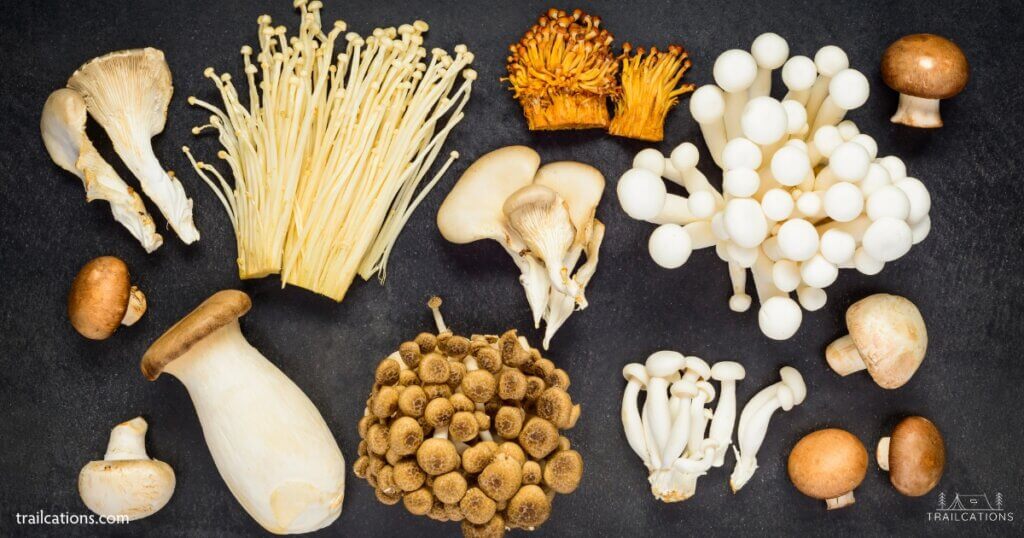
Did you know that there are over 2,000 types of edible mushrooms in the world? That’s a lot of variety! Depending on the mushroom species, some fungi are excellent rehydrated. Others are best eaten fresh or ground into a flavorful powder that acts like a thickener (much like a savory cornstarch or flour).
Use the freshest mushrooms possible and clean with a brush, rinse or saltwater soak before slicing and dicing. Some fungi species rehydrate better with the tough stems separated from the caps.
The best types of Mushrooms to dehydrate include:
- Black trumpet
- Candy cap
- Chaga
- Hen-of-the-Woods (Maitake)
- Crimini
- Enoki
- King trumpet (King oyster)
- Lion’s Mane
- Lobster mushroom
- Matsutake
- Morels
- Mousseron (Fairy ring)
- Nameko
- Paddystraw
- Pheasantback (Dryad’s saddle)
- Porcini (King bolete)
- Puffball, giant
- Shiitake
- Slippery jack
- Truffle
- Turkeytail
- White button
- Wood ear
Mushrooms that are better fresh or for grinding into dried powder:
- Chicken-of-the-Woods
- Hedgehog mushroom
- Large-gilled mushrooms
- Oyster mushroom
- Portabello
- Wine caps
Mushrooms that should not be dehydrated because they are too mushy or tough when rehydrated are:
- Chanterelles
- Cauliflower mushroom
- Shaggy mane
What Herbs and Spices Can Be Dried in a Dehydrator?
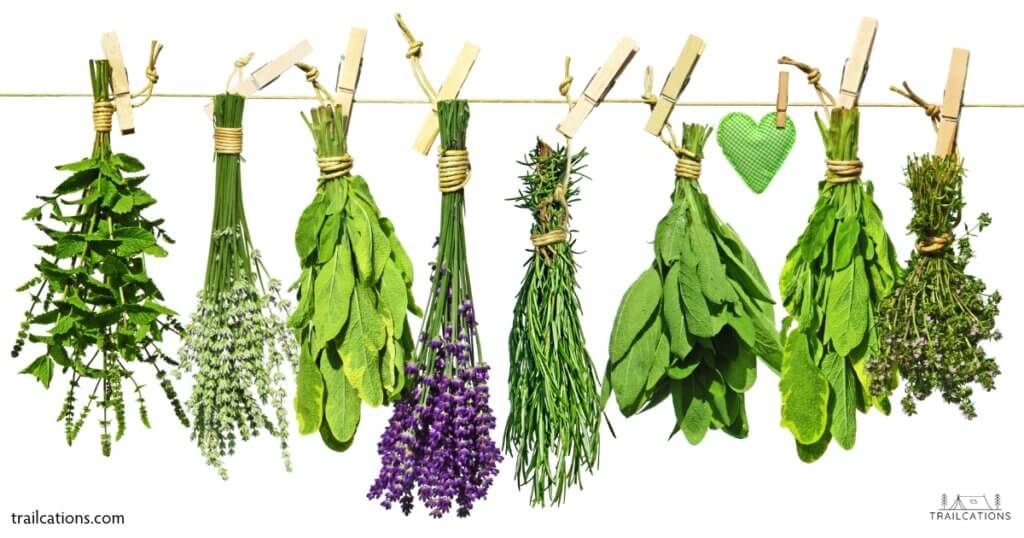
Almost any herb or spice is a great candidate for dehydrating. One benefit of home dried herbs is that they are much more intensely flavored than dried herbs found at the store. For the most flavor, leave your dehydrated herb intact when possible and only grind or crumble the herb right before cooking with it.
Herbs from your garden should be picked mid-morning after the dew dries but before the heat from the sun evaporates the delicate essential oils. Trim away discolored plant parts, wash the leaves and stems gently and slice or grate roots. A dehydrator will produce herbs and spices of the highest quality which can be used to add flavor to a variety of dishes. Air drying herbs works as well but keep them enclosed in a brown paper bag to avoid dust or insects from collecting.
Some of the best herbs and spices to dehydrate include:
- Allspice
- Angelica
- Anise
- Basil
- Bay leaf
- Borage
- Caraway
- Cardamom
- Celery, leaf & seed
- Chamomile
- Chives
- Comfrey
- Cumin
- Curry leaf
- Dill
- Fennel
- Garlic
- Ginger
- Green onions (scallions)
- Horseradish
- Hot peppers
- Hyssop
- Juniper berries
- Lemon balm
- Lemongrass
- Lemon verbena
- Licorice
- Marjoram
- Mesquite
- Mustard seed
- Oregano
- Parsley
- Pennyroyal
- Rose
- Rosemary
- Saffron
- Shallots
- Shiso
- Tansy
- Tarragon
- Turmeric
- Vanilla
- Wasabi
- Woodruff
Can You Dehydrate Sauces and Condiments?
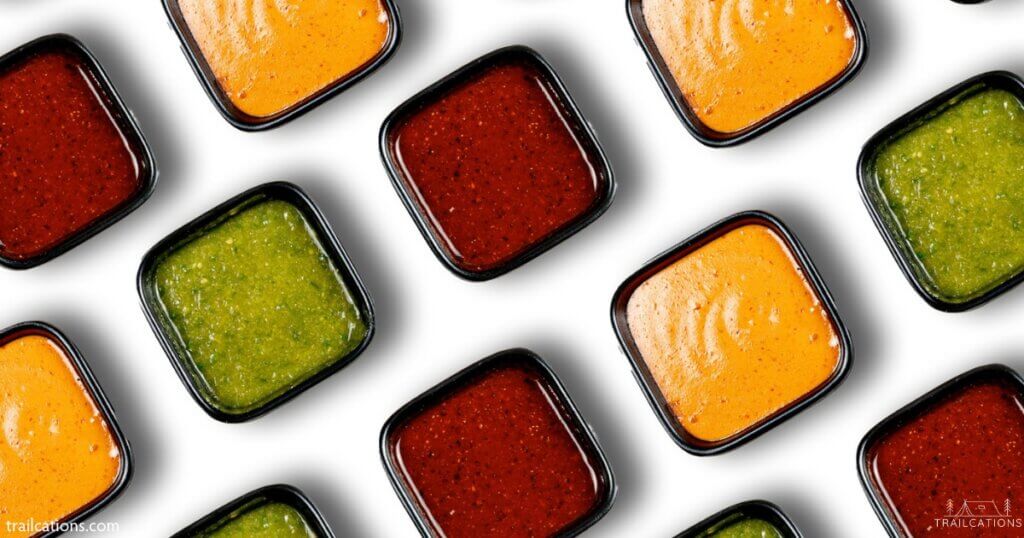
I was beyond excited when I found out that you could dehydrate savory sauces and condiments to add to your pasta, rice and noodle dishes. Dehydrated sauces took my boring, flavorless backpacking meals to the next level (also known as Flavortown).
On some of my thru-hikes, I even had other hikers in the middle of the woods ask if they could buy my backpacking meals off me because the dried sauces made the meals so delicious. If Michelin Star restaurants are dehydrating sauces for their fancy tasting menus, why can’t you do the same for camping meals?
Pour the sauce or condiment into a thin, even layer on a silicone or parchment paper lined sheet, spreading with a spatula to the edge. After the sauce or condiment is dried, break it up into pieces to form a “bark” or grind into a powder to add to meals.
Deciding What Sauces and Condiments Can and Cannot be Dehydrated
Keep in mind that oil, egg, fatty meat or dairy-based sauces are not good candidates for dehydrating. Avoid condiments with artificial sugars, preservatives or contain a lot of chemical additives as they will taste strange when dried. A good rule of thumb is that any sauce containing more than 10% weight of fat per serving should not be dehydrated.
The best types of Sauces and Condiments to dehydrate are:
- Applesauce
- BBQ sauce
- Buffalo sauce
- Chocolate sauce
- Chutney
- Cocktail sauce
- Curry paste
- Duck sauce
- Fruit sauces
- Gochujang
- Gravy, fat free
- Hoisin
- Hot sauce
- Jerk sauce
- Ketchup
- Liquid aminos
- Maggi sauce
- Maplye syrup
- Meat sauce, lean
- Mint sauce
- Miso paste
- Molassess
- Mustard
- Oyster sauce
- Pico de gallo
- Pizza sauce
- Ponzu
- Red bean paste
- Salsa
- Soy sauce
- Sriracha
- Steak sauce
- Sweet and sour sauce
- Taco sauce
- Tamari
- Teriyaki
- Tomato sauce
- Vinegars
- Worcestershire
You cannot safely dehydrate the following Sauces and Condiments due to their high fat, oil, dairy or egg content:
- Aioli
- Alfredo sauce
- Baba ganoush
- Buttermilk
- Caramel sauce
- Cheese sauces
- Chimichurri
- Curry, coconut milk-based
- Dairy-based sauces
- Gravy, full fat
- Guacamole
- Harissa
- Hollandaise
- Hummus, oil-based
- Lobster sauce
- Marinades, oil-based
- Mayonnaise
- Mole sauce
- Nut-based sauces
- Oil-based sauces
- Remoulade
- Peanut sauce (satay)
- Pesto
- Salad dressings
- Sambal
- Seed-based sauces
- Tahini
- Tartar sauce
Best Ingredients for Fruit and Veggie Leathers

Fruit and vegetable leathers are great options for dehydrating because they are tasty and healthy snacks that can be easily packed and taken on the go. They are an excellent way to preserve produce and can be made pureeing a variety of fruits, vegetables and other ingredients, making them a versatile snack option. Fruit and veggie leathers are also easy to make, requiring only a few simple ingredients and a dehydrator.
Another benefit of fruit leathers is that they can be made without any added sugars or preservatives, making them a natural and nutritious snack option. They are also a good way to use up ripe or excess fruit and vegetables, reducing food waste. Overall, fruit and veggie leathers are a convenient and healthy snack that can be made at home, making them a great choice for those who are health-conscious or looking to reduce their environmental impact.
When deciding what foods can and cannot be dehydrated in regards to fruit and veggie leathers, always aim to use low fat or nonfat ingredients to maximize shelf life. If you add extras like nuts or puddings, store your fruit leathers in the fridge and consume within a few weeks. When we make fruit leathers, it’s a miracle if they don’t get eaten within a couple of days – they’re just THAT good!
Some of the best types of ingredients to dehydrate for Fruit and Veggie leathers are:
- Applesauce
- Alcohol*
- Canned fruit & veggies
- Citrus zest
- Cocoa powder
- Dates, pureed
- Extract, vanilla, etc.
- Fresh fruit & veggies
- Frozen fruit & veggies
- Fruit preserves
- Honey
- Hot sauce
- Jam, jelly
- Maple syrup
- Pectin, fruit
- Sugar, brown
- Syrups
- Wine
*Use alcohol sparingly as too much will prevent the fruit leathers from setting.
Ingredients to avoid dehydrating in Fruit and Veggie leathers as they will shorten the shelf life are:
- Chocolate chips
- Coconut, dried, milk, oil
- Dairy
- Herbs
- Juices
- Milk
- Nuts, nut butters, nut milks
- Olives
- Oils
- Pudding
- Seeds, seed butters, seed milks
- Sodas
- Spices
- Yogurt
The Best Meat, Dairy and Egg Alternatives for Dehydrating
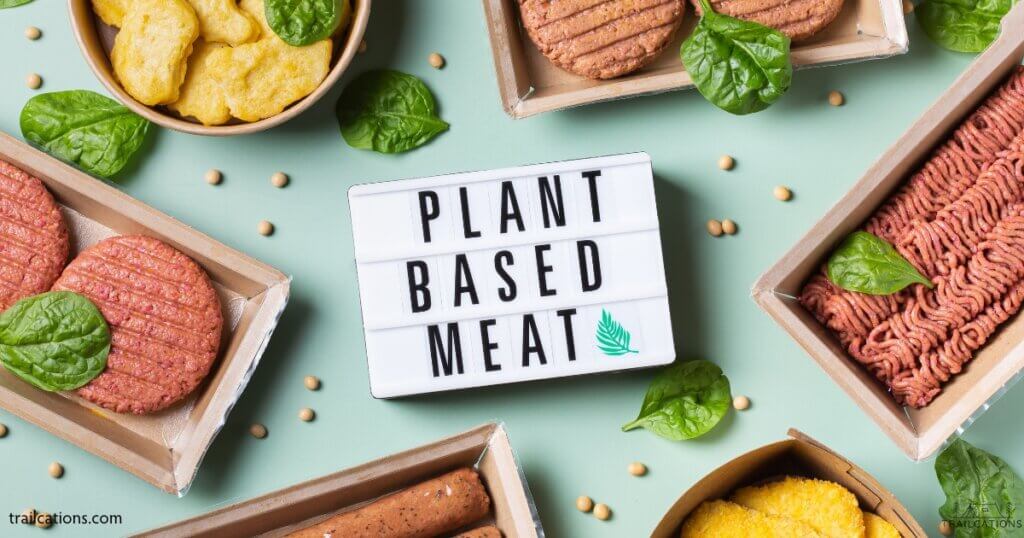
Milk, dairy products and eggs are not recommended for home dehydrating because of the very high risk of food poisoning. Commercially dried dairy and egg products are preserved using rapid techniques such as spray drying at high enough temperatures that prevent bacterial contamination. Your home dehydrator cannot even come close to replicating this process, so please do not try to dehydrate eggs or dairy products.
When determining what foods can and cannot be dehydrated in terms of dairy and eggs, skip this category of food entirely. Spend your money on commercially spray dried egg and dairy powders which are often cheaper and always much higher quality and safer than what you could dry at home.
Dehydrating Dairy and Eggs Can Lead to Severe Food Poisoning
The National Center for Home Food Preservation, the leading resource in the United States for home dehydrating, cautions to never dehydrate eggs or dairy products as the risk of food poisoning is very real. I’ve read and heard about too many food poisoning horror stories from individuals who tried to dry dairy and eggs at home – the risk greatly outweighs any benefits.
The effects of food borne bacteria such as botulism, salmonella, E. coli and listeria range anywhere from several days of vomiting and diarrhea to seizures, permanent nerve damage, paralysis and even death. Sounds lovely, right?
With there being so many options of extremely affordable spray dried dairy and egg powders for purchase, as well as plenty of safe plant-based substitutes to dry on your own, there is absolutely no need to even consider home drying dairy and eggs. Avoid using any dehydrating recipes that recommend home drying dairy and eggs as it’s more of a game of Russian roulette instead of a reliable method of food preservation.
Choose to Dehydrate the Right Plant-Based Meats, Dairy and Egg Substitutes
For our vegan and vegetarian friends, there are so many great plant-based substitutes to dehydrate in place of meat, dairy and eggs. Some ingredients rehydrate exceptionally well and can be used as chewy jerky alternatives, protein to plant-based meals and healthy ingredients for delicious dehydrated desserts.
Avoid using nuts and seeds as dairy, meat and egg alternatives for dehydrating. Keep in mind that nuts, seeds and their derived products (ex: milks, flours, butters, etc.) have naturally high fat content that are typically not good for the dehydrator and long term storage. The oils in nuts and seeds become rancid after a short period of time and must be stored in your refrigerator or freezer to slow down the spoilage process.
The best Meat substitutes to dehydrate include:
- Breadfruit
- Beans
- Cauliflower
- Chickpeas
- Eggplant
- Green spelt
- Jackfruit
- Lentils
- Legumes
- Lupin protein
- Mock duck
- Mushrooms
- Mycoprotein
- Oat flakes
- Pea protein
- Plant-based meat, <10% fat
- Seitan (Vital wheat gluten)
- Soy curls
- Soy protein
- Textured vegetable protein (TVP)
- Tofu
- Whole grains
Avoid dehydrating the following Meat substitutes as they contain too much oil and fats:
- Nut-based meats
- Nut roast
- Seed-based meats
- Tempeh
- Plant-based meats, fatty
Instead of dehydrating Dairy, purchase spray-dried dairy powders which are safe to eat and affordable:
- Buttermilk powder
- Butter powder
- Cheese powder
- Cream powder
- Cream cheese powder
- Goat milk powder
- Milk powder, fat free, whole
- Sour cream powder
- Sweetened condensed milk powder
- Yogurt powder
Instead of dehydrating Eggs, opt for buying freeze-dried powders or drying low fat plant-based egg substitutes:
- Agar-agar
- Applesauce, unsweetened
- Aquafaba
- Arrowroot powder
- Banana, mashed
- Chia seed, whole
- Dates, pureed
- Egg powder, freeze dried
- Egg replacer powder
- Gelatin
- Potato starch
- Psyllium husk
- Pumpkin puree
- Soy protein powder
- Tapioca starch
- Tofu, silken
- Vinegar + baking soda
What Type of Grains and Noodles Can You Dehydrate?
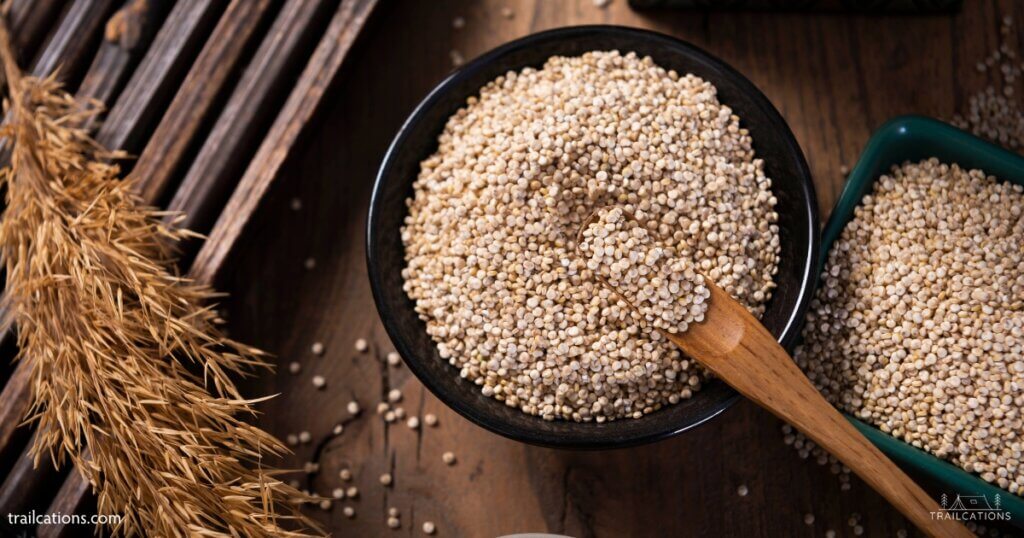
Dehydrating grains and noodles is a great way to reduce cooking time and add some substance to your meals and snacks. A dehydrator is also a great way for raw food dieters to dry their sprouted grains, retaining all of the healthy nutrients without actually cooking the food.
Parboiling Grains to Reduce Rehydrating Times
One of my favorite camping life hacks is to partially cook grains that typically take a long time to cook (ex: rice, barley, farro, etc.) before my trip and then dehydrate them. At camp, the parboiled grains rehydrate in a fraction of the normal cooking time. Plus, I use less camping fuel in the backcountry (or no fuel at all)! Parboiling and dehydrating grains is a great way for stoveless backpackers and hikers to access more variety in their diet.
Some of the best types of Grains to dehydrate are:
- Amaranth
- Barley
- Buckwheat
- Corn Farro
- Freekeh
- Kamut
- Kaniwa
- Millet
- Oats
- Quinoa
- Rice
- Rye
- Sorghum
- Spelt
- Teff
- Triticale
- Wheat
- Wild Rice
Try dehydrating some of the following options for Processed Grains and Noodles:
- Bean thread noodles
- Bulgur
- Cereal
- Couscous
- Egg noodles
- Gnocchi
- Grits
- Groats
- Hominy
- Instant rice
- Mac-n-cheese
- Matzo
- Muesli
- Oatmeal
- Orzo
- Pasta
- Polenta
- Porridge
- Ramen noodles
- Ravioli
- Rice noodles
- Risotto
- Shirataki noodles
- Soba noodles
- Spaetzle
- Stuffing
- Tabbouleh
- Tortellini
- Udon noodles
The Best Gluten Free (GF) Grains, GF Noodles, GF Grain Substitutes, Processed GF Grains For Dehydrating
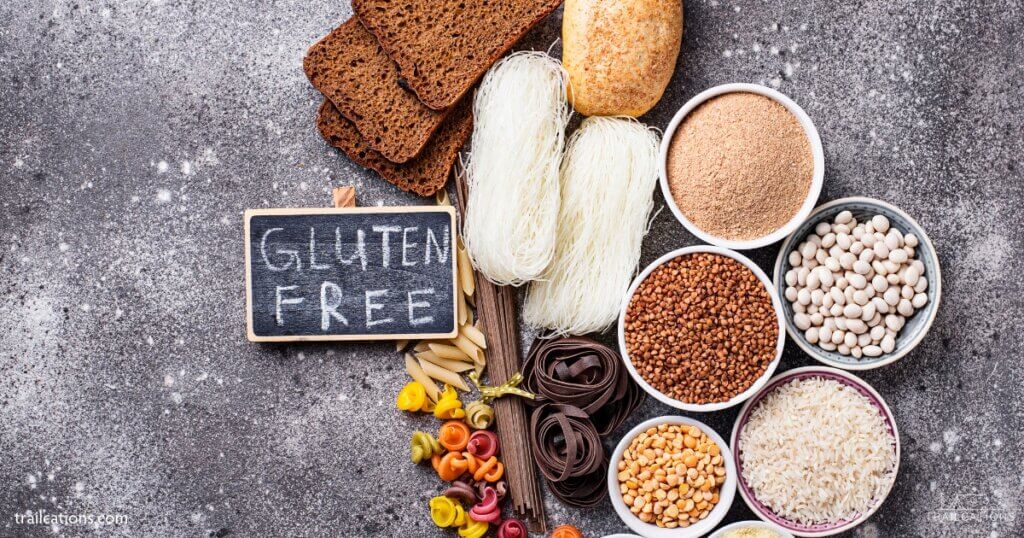
For our Celiac or gluten-sensitive friends, a dehydrator is a perfect appliance to dedicate to preserving gluten free grains, grain substitutes and processed GF grains. Dried spiralized veggie noodles made from zucchini or root vegetables are excellent gluten free and vegan pasta alternatives. Parboil long cooking time GF grains or legumes like rice and lentils before dehydrating the ingredients to speed up rehydrating times at camp. A dehydrator will help you make your own gluten free breakfast granola, savory GF refried bean enchiladas, spicy GF Pad Thai or hearty homemade gluten free stuffing turkey dinners.
There are so many excellent grain substitutes and processed gluten free grains that can be dehydrated for healthy, allergen-free meals and snacks. Being someone with a severe gluten sensitivity myself, I loved learning about what foods can and cannot be dehydrated that are gluten free. There are so many options! I can’t help but rejoice in the many creative gluten-free foods available for dehydrating.
Some of the best Gluten Free (GF) Grains and Grain Substitutes for dehydrating are:
- Amaranth
- Arrowroot
- Beans
- Buckwheat
- Cauliflower
- Cassava
- Celeriac
- Chickpeas
- Corn (GF)
- Kaniwa
- Lentils
- Lupini bean
- Millet
- Montina (Ricegrass)
- Oats (GF)
- Palm hearts
- Pea protein
- Potato
- Quinoa
- Rice
- Sorghum
- Soy
- Squash
- Sweet potato
- Teff
- Wild rice
- Zucchini
Great options for Gluten Free Noodles and Processed GF Grains that are also great for your dehydrator are:
- Bean thread noodles
- Beets, spiralized
- Butternut squash, spiralized
- Carrots, spiralized
- Cauliflower, instant mashed
- Cauliflower, riced
- Celeriac, spiralized or grated
- Cereal (GF)
- Chickpeas
- Cnocchi, GF
- Grits, GF
- Groats
- Heart of Palm, noodles
- Hominy
- Kelp noodles
- Lentils, whole
- Lupini protein
- Mac-n-cheese (GF)
- Muesli (GF)
- Oatmeal (GF)
- Pasta (GF): corn, lentils, lupini, pea, rice, soy
- Pea protein rice
- Polenta
- Porridge (GF)
- Potatoes, instant mashed
- Quinoa
- Ramen noodles (GF)
- Ravioli (GF)
- Refried beans
- Rice, instant
- Rice noodles
- Spaghetti squash
- Soybean noodles
- Shirataki noodles (konjac)
- Sweet potatoes, instant mashed, spiralized
- Stuffing (GF)
- Tapioca noodles
- Vermicelli noodles (Mei fun)
- Zoodles (Zucchini noodles)
The Best Raw Foods For Dehydrating and Long Term Storage
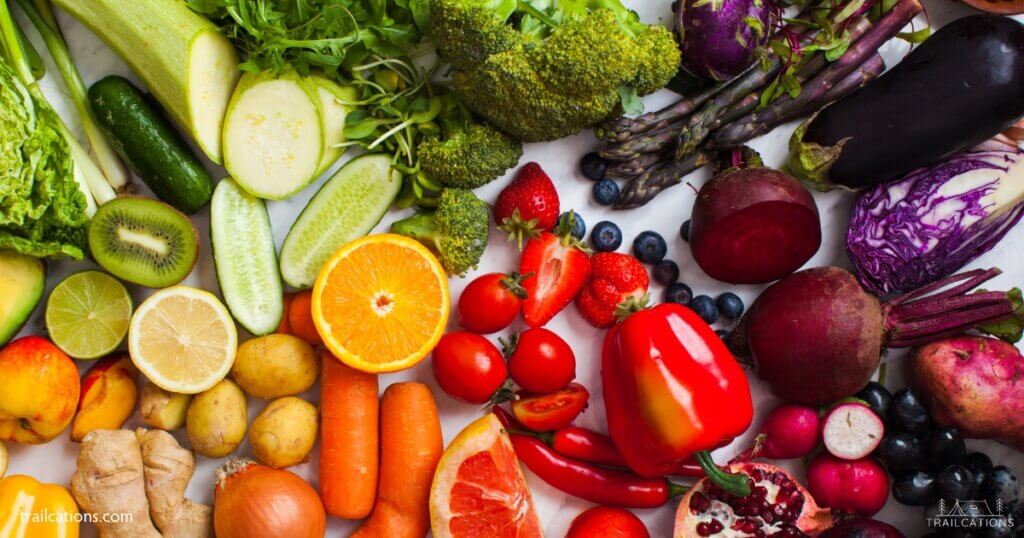
Dehydrators are perfect for raw foods enthusiasts looking to make nutrient-rich meals and snacks that meet the raw food diet guidelines. Many raw foods are great candidates for dehydrating, whether you’re looking to dry sprouted grains, spice up meals with fermented dried veggies or create healthy fruit snacks.
However, if you’re looking to store your raw dehydrated food for long term storage, you should avoid drying foods like nuts and seeds. The healthy fats in nuts and seeds will spoil if stored long term at room temperatures. Instead, store these raw foods in a freexer or refrigerator.
A dehydrator is the perfect tool for the raw food diet as it can dry foods at low enough temperatures that the food doesn’t cook. The enzymes and nutrient content of a dehydrated food are almost exactly the same as the raw version of the food, allowing you to easily adhere to the raw food diet.
Some of the best types of Raw Foods for dehydrating are:
- Agave nectar
- Coconut nectar
- Fruits, raw (minus avocado, coconut)
- Fruit leathers
- Herbs
- Honey, raw
- Kimchi
- Liquid aminos
- Miso paste
- Nama shoyu (raw soy sauce)
- Sauerkraut
- Seaweed
- Smoothies (dairy free, fat free)
- Spices
- Sprouted grains
- Sprouted beans
- Stevia
- Vegetables, raw (minus potatoes)
- Vegetables, spiralized noodles
- Vinegars
Avoid dehydrating these Raw Foods:
- Avocado
- Cashew “cheese”
- Chocolate, raw
- Coconut
- Coconut milk
- Dairy, unpasteurized
- Eggs, unpasteurized
- Fish, raw
- Oils
- Meat, raw
- Nuts
- Nut butters
- Nut milks
- Seeds
- Seed butters
- Seed milks
- Sprouted nuts
- Sprouted seeds
Dehydrating Sweeteners
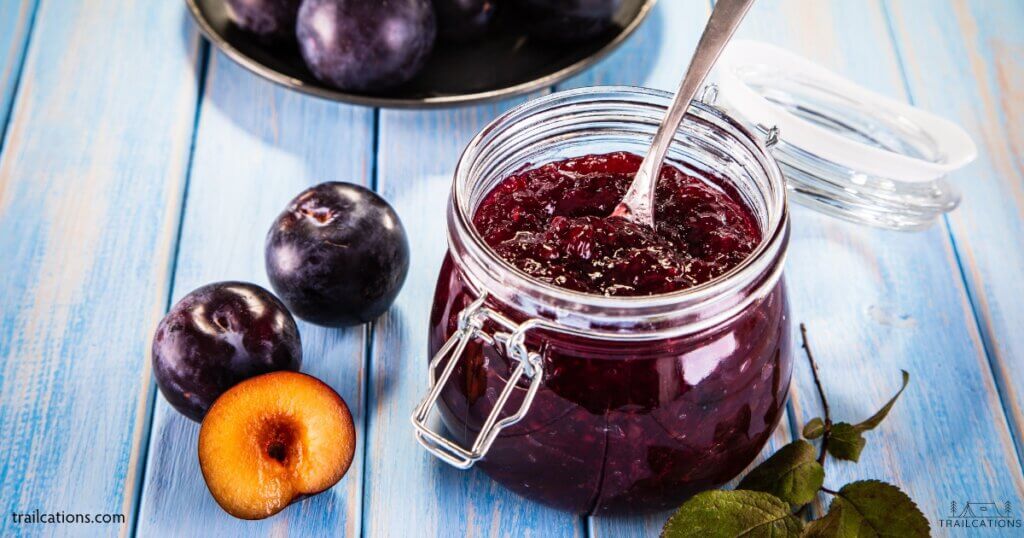
Dehydrating sweeteners like honey, jam, sugar and syrup can be a great way to preserve them for a longer period of time. Dehydrating honey, for example, involves spreading it out thinly on a non-stick surface and placing it in a dehydrator for up to 48 hours. The result is a hard, crispy material that can be stored for months without fear of it getting spoiled or crystallized.
Dehydrating jam results is a sticky, chewy, and delicious treat that can be eaten as a snack or added to other dishes for an extra boost of flavor. Syrup can also be dehydrated to make crunchy candies or flavoring powders. Use sweeteners sparingly as dehydrating concentrates the flavor of a food and it is easy to overdo it. Avoid using sugar substitutes like sugar alcohols and artificial sweeteners which when dehydrated can create harsh chemical flavors.
Overall, dehydrating sweeteners is a great way to prolong their shelf life and experiment with different textures and tastes. Some good sweeteners to dehydrate are:
Some of the best Sweeteners to dehydrate are:
- Agave nectar
- Applesauce
- Balsamic glaze
- Brown rice syrup
- Coconut nectar
- Chutney
- Date puree
- Date syrup
- Fruit butters
- Fruit puree
- Honey
- Jam
- Jelly
- Maple syrup
- Molasses
- Monk fruit
- Preserves
- Stevia
- Sugar, brown, maple, palm, piloncillo*
*Sugars – use sparingly as it can cause fruit leathers to become gritty in the dehydrator.
Sweeteners you should not dehydrate are:
- Artificial sugars
- Allulose
- Aspartame
- Erythritol
- Fruit juices
- Maltitol
- Saccharin
- Sorbitol
- Sucarlose
- Sugar alcohols
- Xylitol
Dehydrated Baked Goods: Cakes, Breads, Pastries and Bars

When it comes to dehydrating cakes, breads, pastries and bars, your best bet is to avoid recipes with dairy, eggs, oils and fats. Unfortunately, these are usually the same ingredients that make these types of baked goods, well, taste good! However, with a little modification and creativity, you can easily find substitute ingredients for your favorite baked goods recipes that can also be safely dehydrated.
There are also some low fat baked goods that are decent candidates for dehydrating. Vegan, vegetarian and raw food diets also tend to have good low fat, dairy and egg free recipes that can be safely dehydrated.
Be careful when vacuum sealing baked goods for long term storage as they can become brittle and tend to crumble in bags.
Some of the best types of Baked Goods for dehydrating are:
- Angel food cake
- Bread, gluten free
- Bread, white, wheat, oat, rye, etc.
- Breadcrumbs
- Graham crackers
- Granola
- Granola bars
- Meringues, vegan
- Pita bread
- Raw breads
- Raw baked goods (fat free)
- Rice cakes
- Tortillas, corn
- Tortillas, flour
Do not dehydrate these Baked Goods as they have too much oil, fat, dairy or eggs in them to make them safe for long term storage:
- Biscuits
- Brownies
- Cakes
- Cheesecakes
- Cobblers, crisps, crumbles
- Cookies
- Crackers
- Croissants
- Cupcakes
- Custards
- Doughnuts
- Fruit breads
- Fudge
- Macarons
- Meringues
- Muffins
- Parfaits
- Pastries
- Pie
- Pudding
- Scones
- Tarts
Also, avoid using these ingredients in any Dehydrated Baked Goods:
- Animal fats
- Avocados
- Butter
- Buttermilk
- Cream
- Coconut milk
- Coconut oil
- Dairy
- Eggs
- Lard
- Margarine
- Nut butters
- Nut milks
- Oils, any kind
- Seed butters
- Seed milks
- Tahini
- Vegetable shortening
- Whipped cream
- Yogurt
Can You Dehydrate Dog and Cat Food?

Dehydrating pet food is a great way to preserve healthy snacks and treats for your furry animal friends. You can dehydrate wet pet food from the store or puree meat, fruit vegetables to make your own homemade dog or cat treats.
Ensure that you’re familiar with what types of ingredients to avoid using when you’re drying pet food and treats. Just because you can eat certain fruits, veggies or meats doesn’t mean that your beloved dog or cat can eat them! In fact, some of your favorite human foods will actually make your fluffy friend very sick so only choose pet-safe ingredients.
Finally, make sure your dog food or cat food ingredients are low in fat before dehydrating and that you only use lean cuts of meat or fish.
Some of the best types of Meat to dehydrate for Pet Food long term storage are:
- Alligator
- Beef, lean
- Bison, lean
- Chicken, lean
- Elk
- Fish, lean
- Goat
- Kangaroo
- Organ meat – gizzards, heart, kidney, liver, tripe
- Ostrich
- Rabbit
- Turkey, lean
- Venison
The best types of Vegetables to dehydrate for Dog and Cat food are:
- Broccoli
- Brussels sprouts
- Carrots
- Celery
- Cauliflower
- Green beans
- Kale
- Peas
- Pumpkin
- Spinach
- Sweet potato
- Zucchini
The best types of pet-safe Fruits for dehydrating Pet food are:
- Apple
- Banana
- Bluebrries
- Cantaloupe
- Cranberries
- Mango
- Peaches
- Pears
- Pineapple
- Raspberries
- Strawberries
- Watermelon
Dehydrating food is a great way to preserve ingredients for long term storage. Whether you are looking to stock up on emergency supplies, planning a backpacking trip or just want to have healthy snacks on hand, dehydrating food is a great option. Just be sure to choose the right foods to dehydrate, and store them properly to ensure they last as long as possible.
Foods That Cannot Be Dehydrated
While dehydrating is a great way to preserve food for later use, not all foods are suitable for dehydration. Some foods contain too much fat or oil which makes them poor candidates for dehydrating and long term storage. Other types of food contain too much moisture where the end product is unrecognizable, unpalatable or has a poor texture. By avoiding high-fat foods, dairy products, eggs, and avocado, you can ensure that your dehydrated food is delicious and safe to eat.
Here are some types of food that should not be dehydrated:
High-Fat Meats and Fish Cannot Be Safely Dehydrated
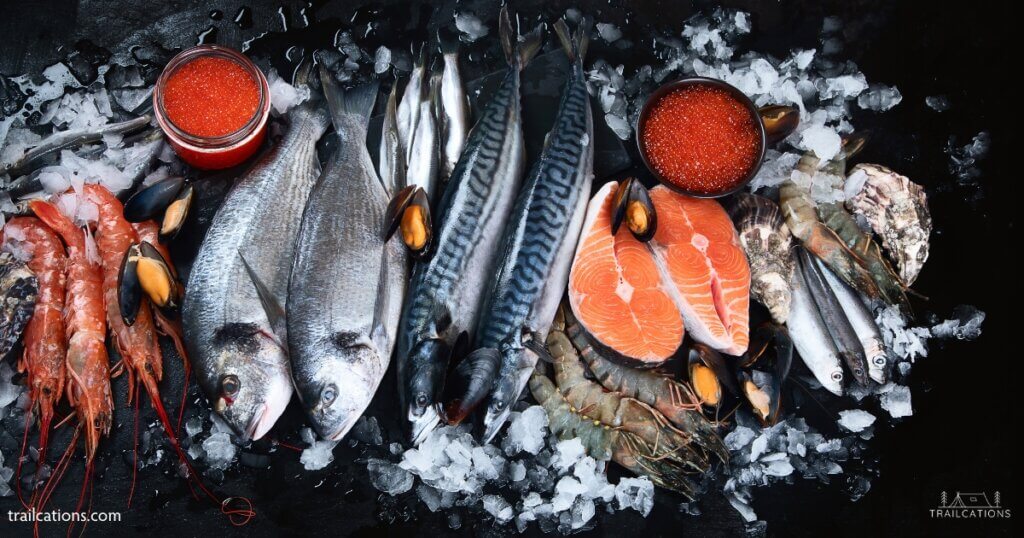
Meats and fish that are oily or high in fat cannot be dehydrated effectively. Dehydrating only removes moisture from a food. Fats do not dehydrate well and quickly spoil when stored at room temperature. Additionally, dehydrating high-fat or oily foods can lead to the development of rancid flavors and odors due to microorganism growth. It is best to avoid dehydrating high-fat meats and fish altogether and rely on safer commercial food preservation methods like freeze drying, canning and spray drying.
Avoid dehydrating the following high-fat Meats:
- Bacon
- Baloney
- Bratwurst
- Chorizo
- Chicken, dark meat, wings
- Deli meat, >10% fat content
- Goose
- Ground meat, >10% fat content
- Hot dogs
- Kielbasa
- Lamb
- Linguica
- Organ meat – brains, intestines, sweetbreads, tongue
- Ox meat
- Pepperoni
- Pork belly
- Pork chops
- Pork, ground
- Proscuitto
- Quail
- Ribeye steak
- Ribs
- Salami
- Sausage
- Sheep (mutton)
According to the National Institutes of Health, do not dehydrate any of the following Fish or Seafood species with more than 5% fat:
- Anchovy
- Arctic char
- Catfish
- Cobia
- Crab
- Eel
- Freshwater bass
- Herring
- Lake trout
- Mackerel
- Mullet
- Oysters
- Rainbow trout
- Salmon
- Sea urchin
- Shark
- Sturgeon
- Swordfish
- Tuna
- Whitefish
Never Dehydrate Dairy Products
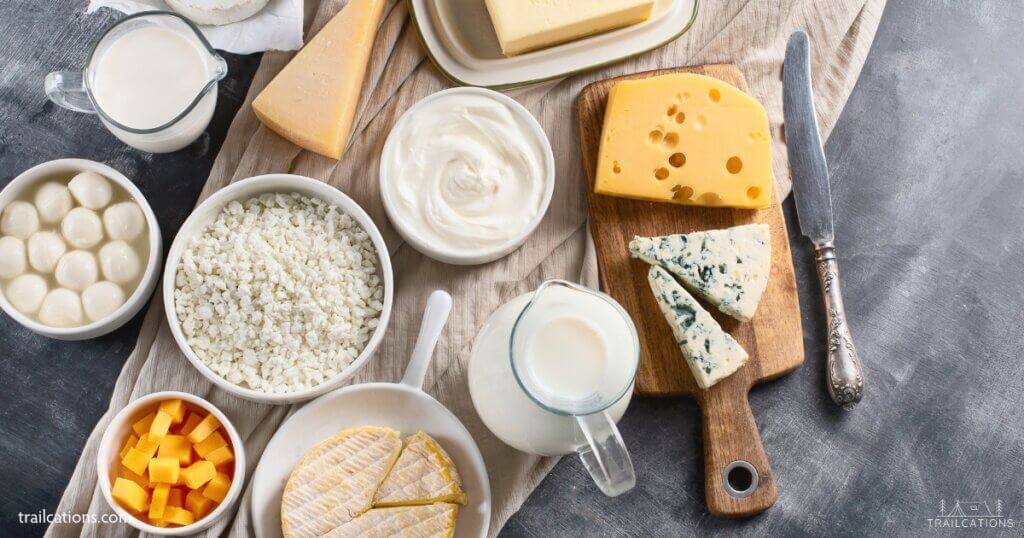
Dairy products such as milk, butter, cheese and yogurt should not be dehydrated due their fat content and the high risk of food poisoning. Dehydrating dairy products can cause harmful bacteria to grow which can lead to illness. Even low fat or fat free dairy products should be avoided due to bad bacteria and mold growth.
Commercially dried dairy products follow strict food safety protocols and use alternative processing methods to dehydration, such as the low temperatures of freeze drying and the rapid processes of spray drying. It is best to avoid dehydrating dairy products and opt for commercially preserved dairy products like freeze dried cheeses and spray dried milks.
“Dairy and eggs are not recommended for home drying because of the high risk of food poisoning. Commercially dried milk and egg products are processed rapidly at temperatures high enough to prevent bacterial contamination. Home dryers cannot duplicate this process, and the safety of home-dried milk and egg products cannot be guaranteed.”
-The National Center for Home Food Preservation, University of Missouri Extension
Skip the risk of food poisoning by avoiding recipes that recommend dehydrating dairy products. Avoid dehydrating the following dairy products:
- Butter
- Buttermilk
- Cheese, any kind
- Clotted cream
- Condensed milk
- Cottage cheese
- Cream
- Cream cheese
- Coffee creamer
- Custard
- Frozen yogurt
- Gelato
- Ghee
- Half-and-half
- Ice cream
- Infant formula
- Kefir
- Lassi
- Milk, animal
- Milk, coconut
- Milk, whole, 1%, 2%, fat free (skim)
- Paneer
- Skyr
- Sour cream
- Whey
- Whipped cream
- Yogurt, Greek
- Yogurt, full fat, nonfat
The Risk of Food Poisoning While Dehydrating Eggs
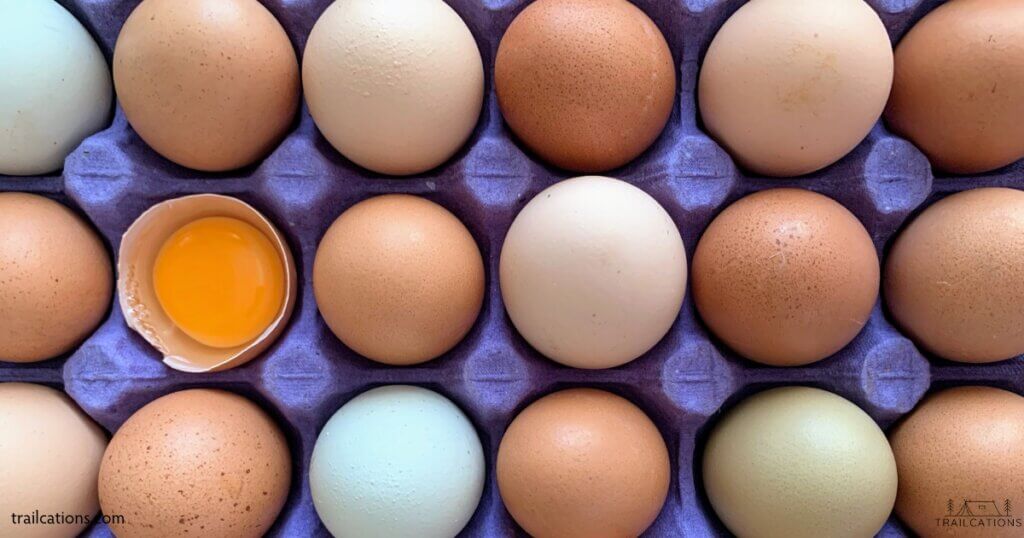
Eggs should not be dehydrated at home because drying temperatures are not high enough to prevent bad bacteria like salmonella from growing. In fact, dehydrating temperatures and the evaporating moisture actually provide the ideal conditions for rapid growth of bacteria in eggs that cause foodborne illnesses. The National Center for Home Food Preservation (University of Missouri Extension) strongly cautions dehydrating enthusiasts to avoid drying eggs at home.
Dehydrating eggs takes too long to dry at too low of temperatures which can lead to severe food poisoning. It is best to avoid dehydrating eggs at home and opt for other preservation methods like purchasing commercially freeze dried eggs.
Purchase Freeze Dried Eggs or Dehydrated Plant-Based Egg Substitutes
Alternatively, opt for dehydrating plant-based egg substitutes instead. Never use any dehydrating recipe where the author recommends dehydrating eggs – it’s like playing Russian roulette with your body. In our opinions, spending a few dollars on commercially dried egg powder is certainly worth avoiding permanent nerve damage, seizures or death that can from foodborne bacteria while dehydrating eggs.
All eggs should be avoided when home drying food. Avoid dehydrating the following egg and egg substitute ingredients:
- Butter
- Chia seed, ground
- Eggs
- Egg replacer liquid
- Egg yolks
- Egg whites
- Flaxseed, ground
- Nut butters
- Seed butters
- Yogurt
Butter and Oil Cannot Be Dehydrated Safely
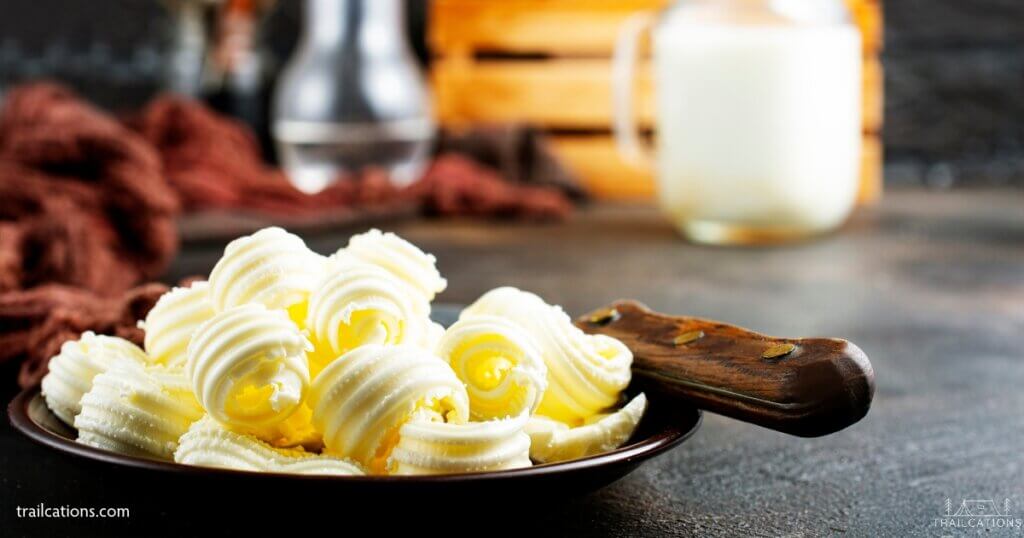
Butter, oil, shortening and other fatty cooking mediums should never be dehydrated. These ingredients are high in fats which can easily go bad in long term storage or when exposed to air and light. Since the dehydrating process preserves food by removing water, it leaves behind everything else, especially oils and fats.
Dehydrated foods containing oils and fats quickly become rancid, not only spoiling the dehydrated ingredients but can cause off flavors and textures. Worse, oil provides the ideal growth medium for dangerous bacteria such as botulism which can have serious complications if ingested.
Avoid dehydrating oily beef jerky marinades and butter-filled baked goods. Instead, opt for commercially spray dried butter powders, carrying a small bottle of shelf-stable oil with you or try dehydrating one of the many wonderfully safe butter and oil alternatives.
All butters and oils should be avoided when dehydrating your own food.
Instead, try one of these safe options for Butter and Oil substitutes:
- Applesauce
- Bananas, mashed
- Butter powder, spray dried
- Butternut squash
- Canned beans, pureed
- Prune puree
- Pumpkin puree
Never dehydrate any of the following Butters, Oils or fats:
- Animal fats
- Avocado
- Butter
- Buttermilk
- Coconut oil
- Dairy products, any type
- Ghee
- Lard
- Margarine
- Mayonnaise
- Nut butters
- Oils, any type
- Seed butters
- Tahini
- Vegan butter
- Vegetable shortening
- Yogurt
You Cannot Dehydrate Avocado Safely 🙁
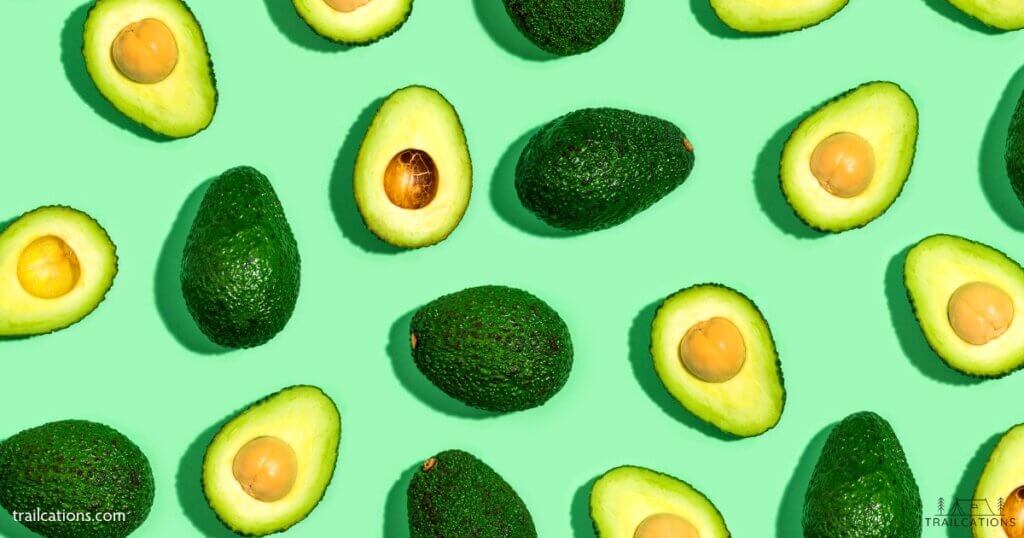
Avocados are another food that cannot be dehydrated effectively. This is because avocado contains high levels of (healthy) fats which makes it difficult to dehydrate and preserve long term. Dehydrating avocado can lead to development of rancid flavors and odors. As tempting as it may sound, it is best to avoid dehydrating avocado altogether.
If you really need your dried avocado fix, try using commercially freeze dried avocado chunks or powders for your smoothies and meals.
Dehydrated Nuts and Seeds Spoil in Long Term Storage at Room Temperature
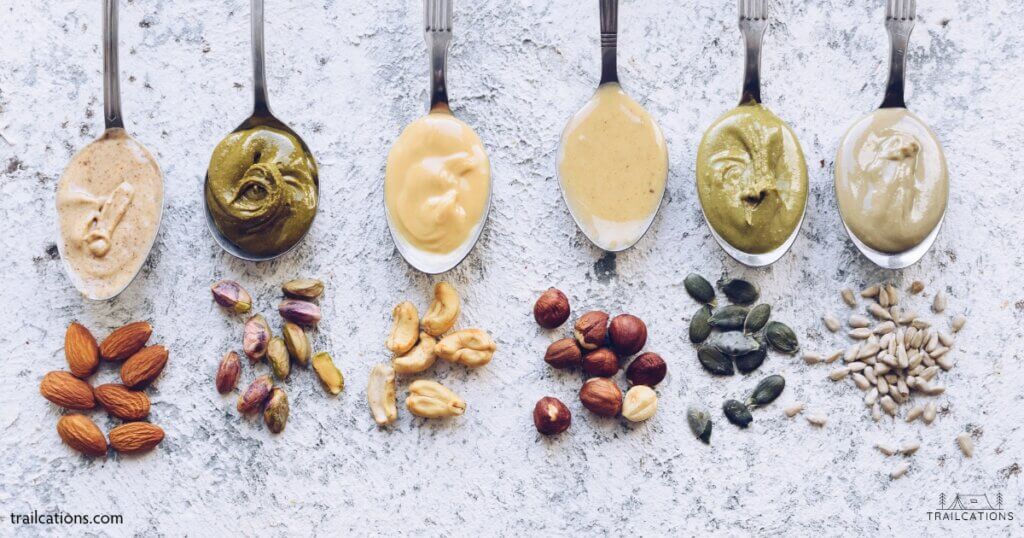
Nuts and seeds are an interesting food for dehydrating because of their high oil content. Technically, they can be dehydrated but they cannot be stored long term outside of the refrigerator or freezer. This is because nuts and seeds contain high amounts of levels of oils and fats which are difficult to preserve long term.
Drying nut meats and seeds is a great way to preserve flavors but keep in mind that you’ll need to store these in a cold place or the oils will go rancid.
Avoid dehydrating the following Nuts and Seeds (unless you’re storing them in a refrigerator or freezer):
- Acorn
- Almond
- Baru nuts
- Brazil nut
- Cacao
- Cashew
- Chestnut
- Chia seeds
- Coconut
- Hazelnut (filbert)
- Hemp seed
- Hickory nut
- Gingko nut
- Macadamia nut
- Palm nut
- Peanut
- Pili nut
- Pine nut (piñon)
- Pistachio
- Poppy seeds
- Pumpkin seeds (pepitas)
- Sesame seeds
- Sprouted nuts
- Sprouted seeds
- Soy nuts
- Sunflower seeds
- Tiger nut
Skip Dehydrating the Oily Marinades
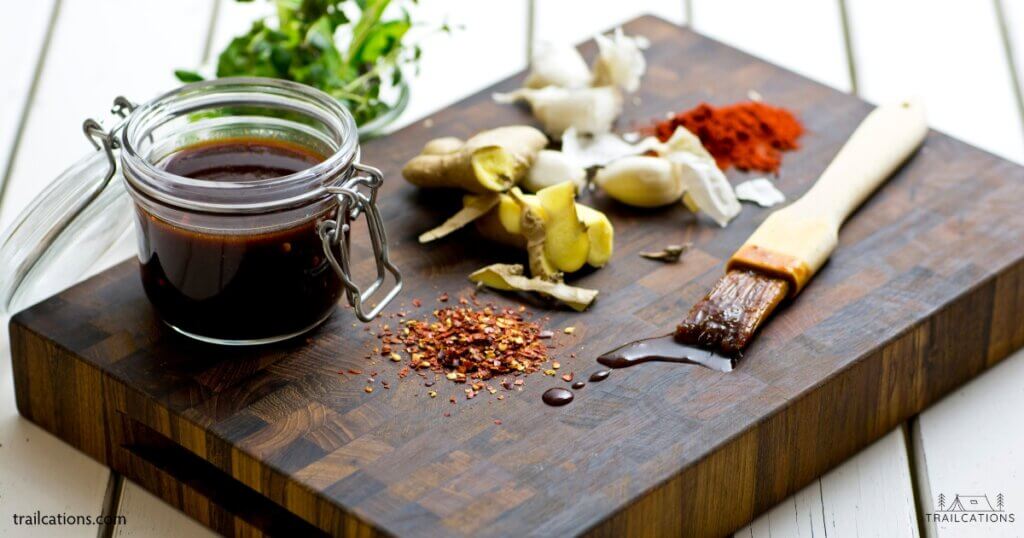
Oily marinades are another ingredient that should not be dehydrated. While making jerky or dehydrated meat, fish or poultry, make sure your seasonings and marinades are oil free. The high levels of fats make it difficult to dehydrate and preserve oily marinades and seasonings long term. Oily marinades can cause rancid flavors and odors in dehydrated foods or even serious foodborne illness.
Instead of using oily marinades, opt for spices, fat-free sauces and herbs to flavor your jerkies, meats and fish.
Flavorless / Weird Texture Foods You May Want To Avoid Dehydrating
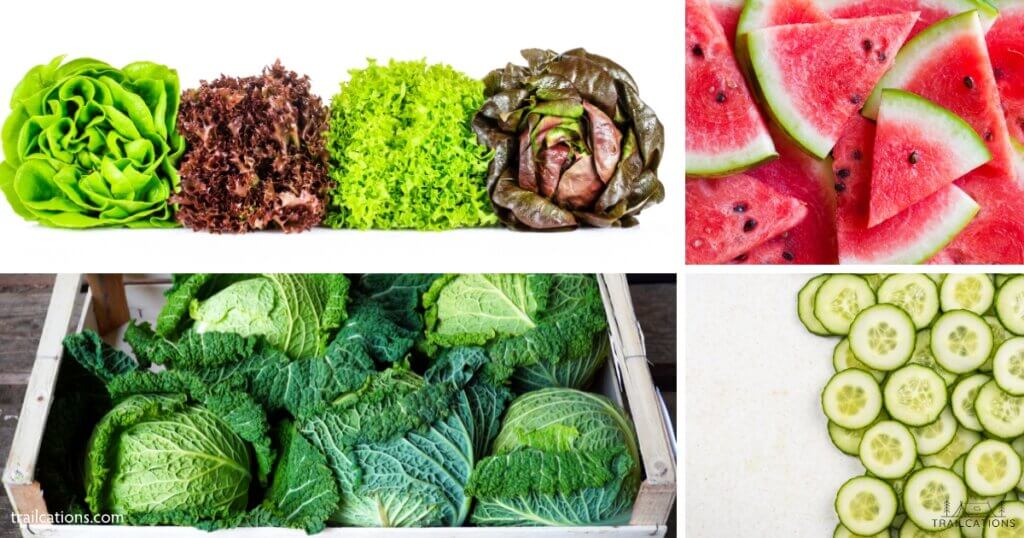
High moisture foods tend to dehydrate with interesting textures and flavors. Some very watery foods like melons can shrink down so much that what’s leftover is so tiny and textureless that it may not be worth drying. Certain high moisture foods like lettuce and cucumbers do not have much flavor to start with and rehydrating these dried foods doesn’t do a whole lot for the taste or texture. Certain mushrooms also do not rehydrate well, either turning mushy or too tough.
Avoid dehydrating the following foods as they have interesting textures and tastes when rehydrated:
- Cabbage
- Cauliflower mushroom
- Chanterelle mushrooms
- Cucumbers
- Juices
- Lettuce
- Milks
- Shaggy Mane mushroom
- Sodas
- Watermelon
Pass On Dehydrating Overripe / Underripe Foods
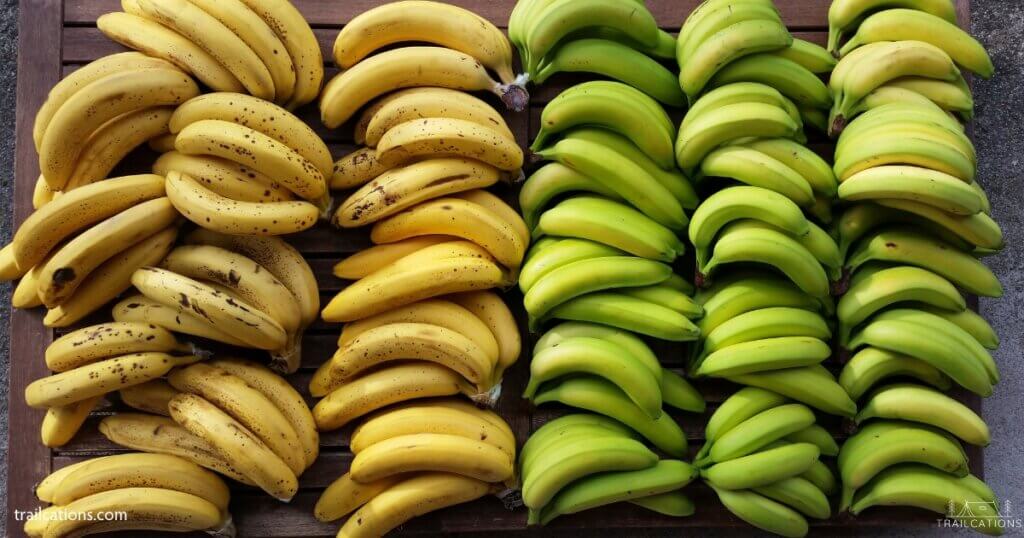
Overripe and underripe foods are not the best foods to dehydrate. Dehydrating concentrates the flavors of a food. It’s not that much of a surprise that the underripe flavors of a fruit or vegetable will make the end product taste wildly underripe.
Likewise, an overripe fruit on the brink of spoiling may be okay or it may concentrate some unwanted flavors. If you start with the best quality and fresh ingredients, you will end up with delicious dried food. Underripe and overripe produce is not always the best for dehydrating so tread carefully.
What Types of Foods Should You Dehydrate? Only the Foods You Like!
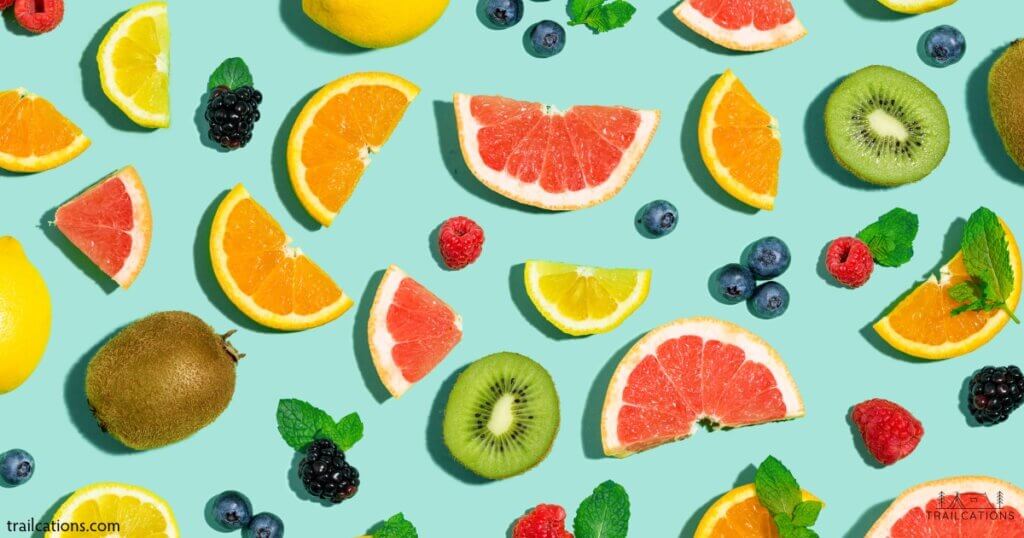
Last but not least, you should only dehydrate foods that you prefer to eat normally. If you don’t usually care to eat spicy foods or certain vegetables, you’re probably not going to like to eat the dehydrated versions!
Dehydrating a food concentrates the flavor of a food so fruits become fruitier, meats become meatier and veggies become, well, veggier. It probably doesn’t make sense to dehydrate tons of ingredients that you don’t normally like as they’ll likely just take up storage space for several months before going to waste.
Storing Dehydrated Food for Long Term Storage
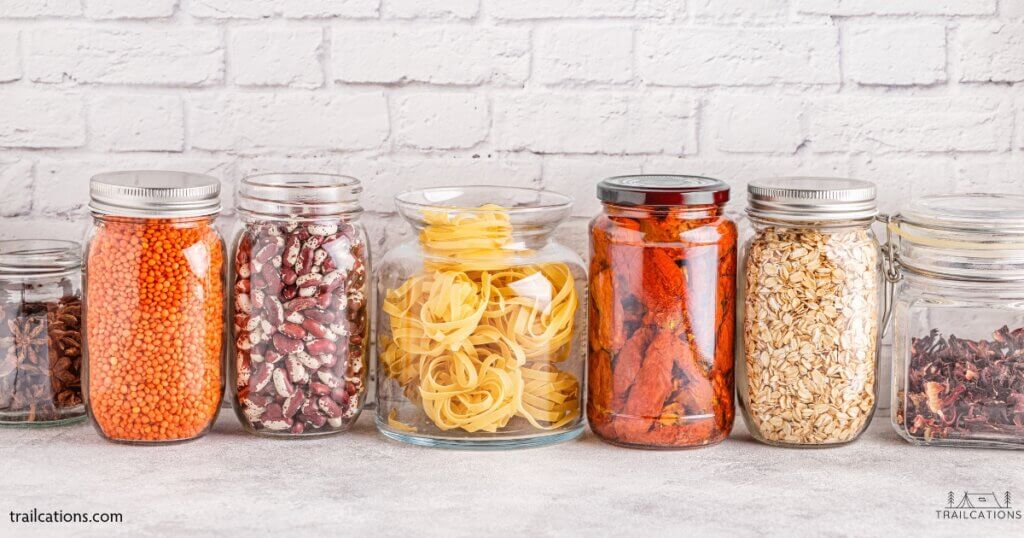
Dehydrated food must be completely dry in order to be stored for the long term. Since dehydrating only removes moisture, or water, from a food, only certain foods are suitable for drying. Oily or fatty foods cannot be safely dehydrated because oils and fats are not removed by the dehydrating process. The resulting dehydrated products containing oil or fats spoil over a short amount of time and can cause serious food poisoning.
Conditioning Your Food: A Final Quality Check
Foods should be dried completely, cooled briefly and then conditioned which means temporarily placing the ingredients in an airtight container or bag. Conditioning allows any residual moisture left in the individual pieces of dried food to balance out over the entire batch.
After a day or two, if the conditioned food shows no sign of condensation, it is safe to store the food long term in a vacuum sealed bag or container. If moisture appears, place the whole batch of food back in the dehydrator.
How to Extend the Shelf Life of Your Dehydrated Food
The shelf life of your dehydrated food can be extended if prior to dehydrating, you pretreat your vegetables and fruit. There are a couple options for pretreatment of produce: dip the food in a 1:1 citrus juice to water solution (ex: lemon juice), citric acid or Vitamin C (ascorbic acid) solution. Research studies have shown that pretreating a food is more effective at destroying harmful bacteria on dehydrated food in long term storage than not pretreating it.
Shelf life can also be extended by vacuum sealing the dried food in a vacuum seal bag or container. Vacuum sealing removes almost all of the oxygen surrounding a dehydrated food, preventing food from going stale or spoiling. Adding a food grade oxygen absorbing packet to your airtight bag or container before vacuum sealing will also remove any trace oxygen from your food.
To increase shelf life by reducing sunlight, moisture and insect exposure, many dehydrating enthusiasts recommend double-bagging your vacuum sealed dried food in a Mylar bag. Alternatively, placing the dried bagged food in a food grade plastic container will also prolong shelf life. Keep your dehydrated food in a cool, dry place away from sunlight for longest storage life.
Conclusion
Dehydrated food is a great option for those who want to preserve food for a longer period of time. However, not all types of food can be dehydrated.
Foods that can be safely dehydrated include fruits, vegetables, lean meats, fish, meat alternatives, mushrooms, grains, raw foods, sauces, herbs, spices, certain baked goods and pet food. On the other hand, certain foods are not safe for drying, including foods high in fat or moisture content such as avocados, dairy, eggs, nut butters, oily marinades and fatty meats and fish.
It’s important to note that dehydrating oily or fatty food can cause rancid or off flavors to develop. In some cases, you can get severe food poisoning from oily and fatty dehydrated foods so it is best to avoid them altogether.
If you’re interested in dehydrating your own food, it’s important to invest in a good food dehydrator. If you don’t have access to a food dehydrator, check out our article on 15 Methods of How to Dehydrate Food at Home (Without a Dehydrator or Electricity)!
Overall, dehydrating food can be a great way to preserve food and reduce waste. Just make sure to choose the right types of food to dehydrate and consider the best ways to store food long term after the dehydration process.
Download Our Free Printable PDF: What Foods Can and Cannot Be Dehydrated? The Ultimate Guide to Dehydrating 500+ Foods!

